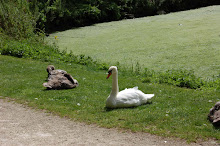"Crowley looked up slyly.“'Then you can't be certain, correct me if I'm wrong, you can't be certain that thwarting it isn't part of the divine plan too. I mean, you're supposed to thwart the wiles of the Evil One at every turn, aren't you?'"Aziraphale hesitated.“'There is that, yes.'“'You see a wile, you thwart. Am I right?'“'Broadly, broadly. Actually I encourage humans to do the actual thwarting. Because of ineffability, you understand.'“'Right. Right. So all you've got to do is thwart."
Monday 28 August 2023
Thwarting Evil Wiles
Wednesday 16 August 2023
Earth
My favourite museum in London is actually a very, very small institution, while my favourite museum object sits in a case in one of the largest and busiest. But my favourite single museum gallery is perhaps a quirky choice. It’s in the Natural History Museum. Not the dinosaurs, nor indeed any other of the Life galleries. Instead, at the other end of the site, in the old Geological museum, now rebadged as the Earth galleries, there is a space that always captures my imagination.
It presents a multi-million year timeline that charts the
story of the evolution of life with plate tectonics and the story of the
changing earth. It covers the various
mass extinction events, and the changing atmosphere alongside the geological
shifts. A few years ago, it had a
refresh, which to my mind dumbed it down a little, but it’s still pretty good.
Perhaps partly because of this, for the last few weeks I’ve
been particularly enjoying the new Chris Packham documentary, “Earth” on the
BBC. The episodes don’t flow in
chronical order, but mostly work back in time from the Permian mass extinction,
covering snowball earth and the early development of the atmosphere along the
way, before ending with the arrival and impact of humans.
It’s pretty good, and includes a lot of the newest science
and archaeology. Chris Packham, I think,
does well as the presenter (I recognise he may be a little marmite for some).
He is passionate, and cares about the stories he’s telling.
Like all TV documentaries, it has its longueurs; as with
most, there is a lot of standing around in beautiful places overseas and
pointing. But there feels, to me, to be
more meat in it than in some of the recent Brian Cox shows, or even, dare I
say, Attenboroughland.
The visual language of these documentaries was established,
I guess, by Kenneth Clark’s “Civilisation” in the late 60s, and Bronowski’s “The
Ascent of Man” a few years later. The
latter is being rebroadcast on BBC4, and is available on iPlayer, so I have had
a look. The visual language is indeed
very similar, but it is much, much slower than the films we have today. And of course some of the arguments are very
dated now.
Anyway, I recommend the Packham series. I think it’s worth the watch,



